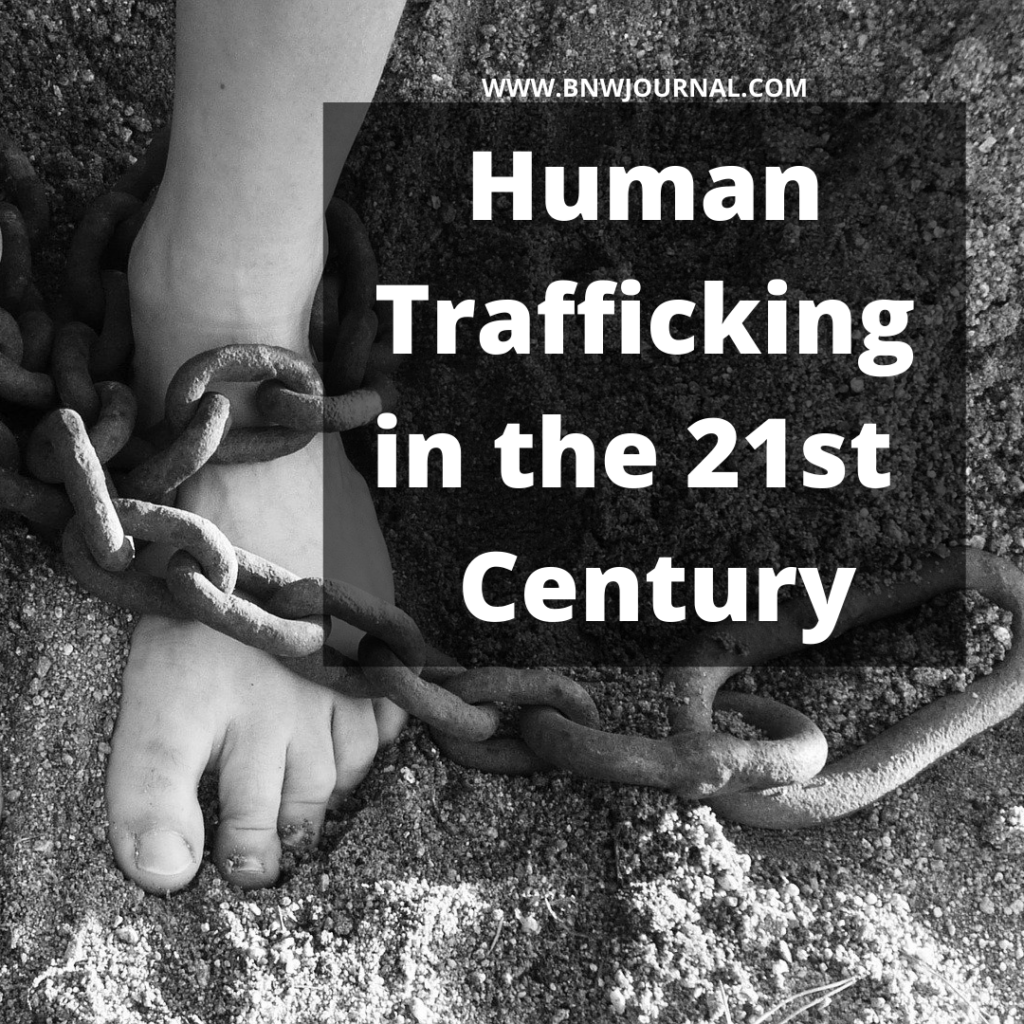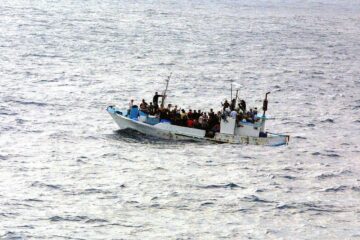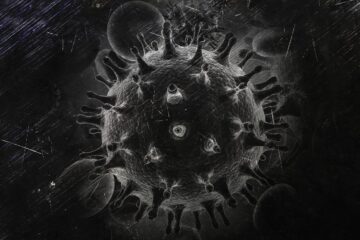![]()
Introduction
Article 3, paragraph (a) of the Trafficking in Persons Protocol states that trafficking in persons “shall mean the recruitment, transportation, transfer, harbouring or receipt of persons, by means of the threat or use of force or other forms of coercion, of abduction, of fraud, of deception, of the abuse of power or of a position of vulnerability or of the giving or receiving of payments or benefits to achieve the consent of a person having control over another person, for the purpose of exploitation. Exploitation shall include, at a minimum, the exploitation of the prostitution of others or other forms of sexual exploitation, forced labour or services, slavery or practices similar to slavery, servitude or the removal of organs.”

Human Trafficking in 21st Century-
Human Trafficking is a grave violation of human rights. It is a very serious crime where every year, many men, women and children become the prey of traffickers. This can be from their own countries and abroad. It is to be note that in the 21st century almost every country in the world is affect by human trafficking. The country can be a country of origin, transit or destination for victims. The trading of human beings runs like a red thread through human history. In-depth we come to know that there are intentions of exploitation, coercion, enforcement and deception. People are often sold from developing regions to develop ones, as well as within a country’s borders.
Its cause & types-
The most common causes of human trafficking are:- poverty, lack of prospects and some even believe that they have a good future given by the trafficker. Exploitation, forced labour, sexual exploitation and slavery are some of the common purposes of human trafficking.
People are usually kidnap before being sold. There are differences between people being smuggle and people being trafficke. Humans are mostly smuggled across international borders whereas they are trafficked both internationally as well as domestically.
It was estimated that 40.3 million people are in modern slavery in 2016. This includes 24.9 million in forced labour and 15.4 million in forced marriage. In modern slavery, 1 out of 4 victims are children. Coming to forced labour, 16 million out of the 24.9 million people are exploited in the private sector which includes domestic work, construction or agriculture. Also, 4.8 million out of the 24.9 million people are subject to force sexual exploitation. Women and girls are large victim to forced labour. It is estimate that 99% of the victims in the commercial sex industry are female. Also, 58% of the victims in other sectors are female.
Criminalization of Human Trafficking
Article 5 of the Trafficking in Persons Protocol deals with the criminalization of the conducts laid in Article 3 in the domestic legislation. It is not require that the legislation needs to follow the language of the Protocol. But it should be in accordance with the domestic legal systems to give effect to the concepts contained in the Protocol.
Besides criminalization, the Protocol requires criminalization also of:
- Attempts to commit a trafficking offence
- Participation as an accomplice in such an offence
- Organizing or directing others to commit trafficking.
It is required that the national legislation should adopt Article 3 of trafficking as prescribed in the Protocol. The definition should be dynamic and flexible so that the legislative framework can respond effectively to trafficking which:
- Happens both within a country and across the borders
- Deals about any exploitative purposes
- Victimizes children, women and men
- Takes place with or without the involvement of organized crime groups.
Conclusion
In December 1948, Human Rights were validate by the United Nations under the Universal Declaration of Human Rights and include the ideal of a worldwide society devoid of slavery. Over time human rights have been express in various forms by many states and alliances.
Human rights are not a matter of opinion. Human Rights might be interpret in different ways in different countries depending on their cultures. Regardless of cultural background, there are higher sets of troubles that every human being considers as inappropriate, uncomfortable and as an invasion of privacy.
Human trafficking is a violation of human rights. It interferes on a person’s right to life, freedom, equality, dignity, safety, non-discrimination, health as well as all rights concerning employment protection. Even though a majority of states have now signed and ratified the Protocol, making it a reality remains problematic. Only a very few criminals are convict. Also, the victims are probably never identifiy or assist.



0 Comments